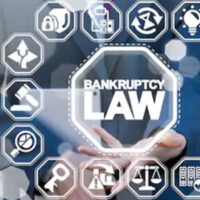Social Security and Bankruptcy

Bankruptcy can be a lifeline for those drowning in debt, but it’s essential to understand how the process affects different forms of income, such as Social Security benefits. It’s wise to consult with an experienced Los Angeles bankruptcy attorney if you’re considering bankruptcy. They can guide you through the complexities of Chapter 7 and Chapter 13, ensuring that your Social Security benefits and other vital assets are protected.
Social Security Benefits: A Protected Asset
Historically, Congress has maintained that Social Security benefits are exempt from being utilized to pay back creditors during bankruptcy. These benefits are shielded from the claims of creditors, reflecting a commitment to protect the financial well-being of beneficiaries.
Commingling Social Security Benefits: A Potential Exception
However, an essential exception could jeopardize this protection. They may lose their exempt status if Social Security benefits are mixed or commingled with other income, such as regular wages. Legal experts recommend creating a separate, dedicated account solely for Social Security income to ensure that these benefits remain protected.
Chapter 7 vs. Chapter 13 Bankruptcy: A Comparative Analysis
Bankruptcy law provides two main avenues for individuals seeking debt relief: Chapter 7 and Chapter 13. Here’s a closer look at both:
Chapter 7: Liquidation
Chapter 7 is often called liquidation bankruptcy. It involves a trustee who sells the debtor’s nonexempt assets and distributes the proceeds to creditors. Unlike Chapter 13, it doesn’t require submitting a debt-repayment plan.
Social Security and Chapter 7: Federal law specifically excludes Social Security benefits from being garnished by creditors. Even so, prior Social Security payments deposited into your bank account could become part of the bankruptcy estate if mixed with other funds. This commingling could lead to these funds being distributed to creditors.
Chapter 13: Reorganization
Also known as the wage earner’s plan, Chapter 13 allows individuals with regular income to devise a plan to repay all or part of their debts over 3 to 5 years. It can help preserve major assets, such as a home or vehicle, and prevent wage garnishment.
Social Security and Chapter 13: Unlike Chapter 7, Social Security benefits are not at risk of being seized in Chapter 13, as the debtor retains all assets while making repayments under the plan.
Reporting Benefit Income: Necessary but Protected
Your Social Security benefits play a role in your bankruptcy filing, both directly and indirectly.
Chapter 13: Social Security benefits must be reported in the income filing but are not included in the calculation of disposable income payable in Chapter 13 cases.
Chapter 7: In California, these benefits must also be listed for Chapter 7 filings. While contributing to the means test determining eligibility, they remain exempt from paying creditors.
Disability Back Pay: An Important Consideration
If you receive Social Security Disability Insurance (SSDI) or Supplemental Security Income (SSI) back pay, understanding how bankruptcy affects these funds is crucial.
Chapter 7: Unspent past disability payments mixed with other money may be pursued by a Chapter 7 trustee. If commingled, this back pay could be considered part of the bankruptcy estate and distributed to creditors.
Chapter 13: In contrast, Chapter 13 protects deposited funds, and this situation doesn’t apply.
Navigating the Intersection of Social Security and Bankruptcy
Social Security and bankruptcy intersection is a complex and nuanced area, particularly in California. While Social Security benefits are largely exempt from bankruptcy proceedings, exceptions and specific circumstances require careful attention and strategic planning.
Consulting with Wadhwani & Shanfeld and discussing your unique financial situation is vital for making informed decisions. We will work with you to navigate the bankruptcy process confidently and securely by taking proactive steps, such as setting up a dedicated account for your Social Security benefits.
Sources:
aarp.org/retirement/social-security/questions-answers/bankruptcy-impact-on-benefits.html
nolo.com/legal-encyclopedia/can-bankruptcy-take-your-social-security.html
